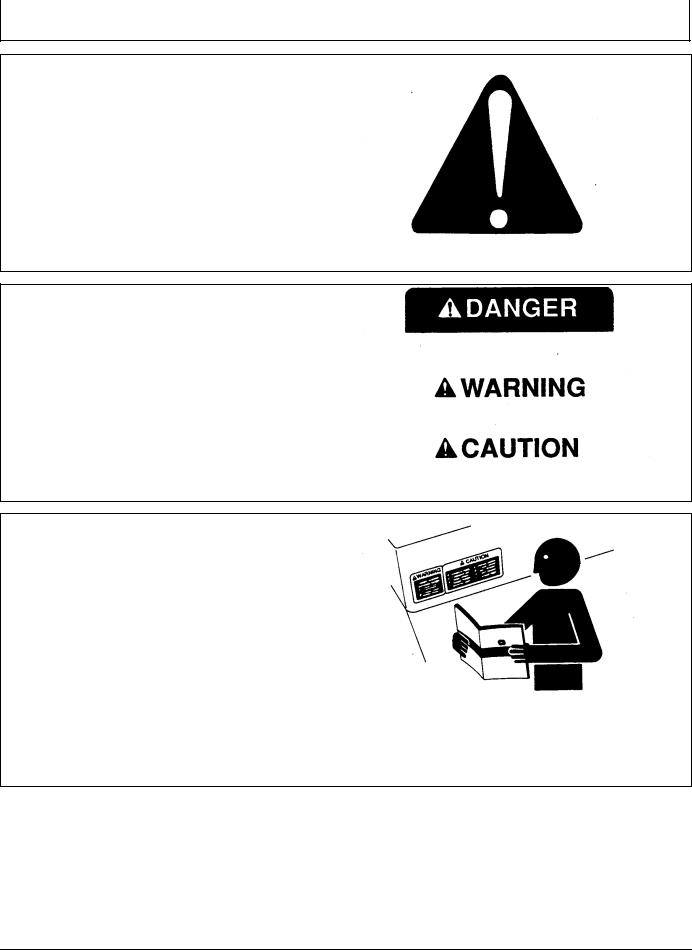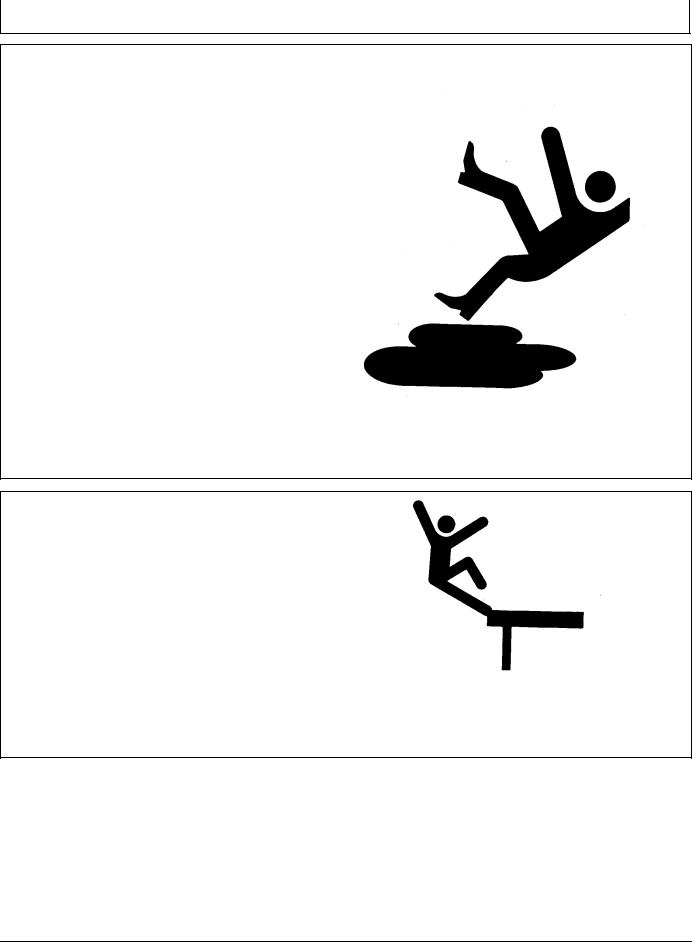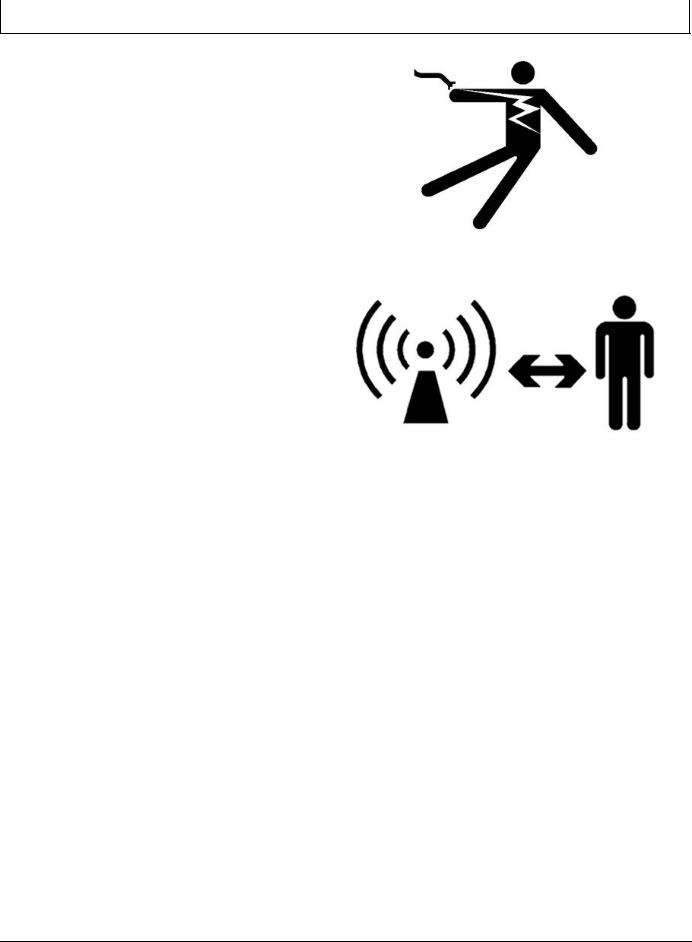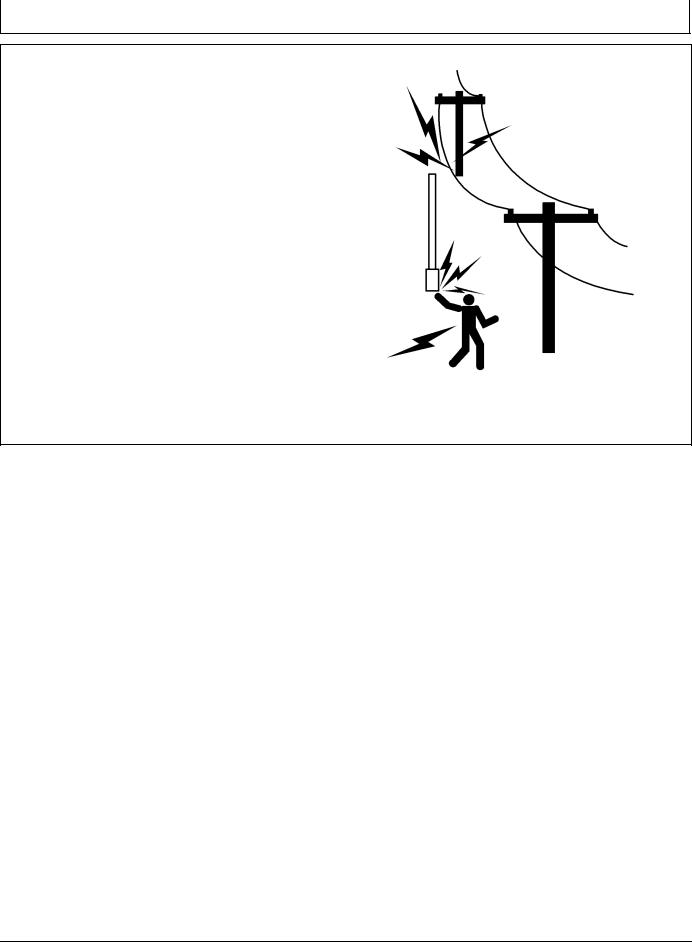John Deere 450 OPERATOR'S MANUAL

John Deere RTK Radio 450
OPERATOR'S MANUAL
John Deere RTK Radio 450
OMPFP10922 ISSUE J1 (ENGLISH)
CALIFORNIA
Proposition 65 Warning
Diesel engine exhaust and some of its constituents are known to the State of California to cause cancer, birth defects, and other reproductive harm.
If this product contains a gasoline engine:
 WARNING
WARNING
The engine exhaust from this product contains chemicals known to the State of California to cause cancer, birth defects or other reproductive harm.
The State of California requires the above two warnings.
Additional Proposition 65 Warnings can be found in this manual.
John Deere Werke Zweibrücken
Worldwide Version
DCY
OMPFP10922
PRINTED IN U.S.A.

Introduction
www.StellarSupport.com
NOTE: Product functionality may not be fully represented in this document due to product changes occurring after the time of printing. Read the latest Operator's Manual and Quick Reference Guide prior to operation. To obtain a copy, see your dealer or visit www.StellarSupport.com
OUO6050,0000FB1 -19-10AUG10-1/1
092711
PN=2

Contents
Page |
Page |
Safety
Recognize Safety Information ............................ |
05-1 |
Understand Signal Words................................... |
05-1 |
Follow Safety Instructions................................... |
05-1 |
Practice Safe Maintenance................................. |
05-2 |
Handle Electronic Components and |
|
Brackets Safely .............................................. |
05-2 |
Prevent Electrical Shock and Fires..................... |
05-3 |
Avoid Exposure to High Radio |
|
Frequency Fields............................................ |
05-3 |
Avoid Electrical Power Lines .............................. |
05-4 |
Safety Sign
Antenna Front View Decal.................................. |
10-1 |
FCC NOTIFICATIONS TO USER
FCC NOTIFICATION.......................................... |
15-1 |
450 MHz RTK..................................................... |
15-1 |
COUNTRY USE RESTRICTIONS...................... |
15-1 |
Licensing of John Deere RTK Radio 450
Licensing of John Deere RTK Radio 450 ........... |
20-1 |
John Deere RTK Radio 450 Compatability......... |
20-1 |
RTK Base Station Setup
System Overview................................................ |
25-1 |
Vehicle Receiver................................................. |
25-2 |
Base Station Setup............................................. |
25-3 |
Base Station Setup—Amplifier Option |
|
(USA and Canada only) ................................. |
25-4 |
Base Station Setup—Dual Radio (USA |
|
and Canada only)........................................... |
25-6 |
Radio Power Setting to Meet Licensed ERP...... |
25-9 |
GS3 Display SF3000—John Deere RTK Radio 450
RTK SoftKey....................................................... |
30-1 |
Screens Common to Standard |
|
(869MHz, 900MHz) and RTK Radio 450 ....... |
30-2 |
RTK Main Page .................................................. |
30-2 |
RTK Configure Page .......................................... |
30-4 |
Diagnostic LEDs
Diagnostic LEDs................................................. |
35-1 |
RTK Radio 450 LEDs ......................................... |
35-1 |
Amplifier LEDs (USA and Canada only)............. |
35-2 |
RTK Radio 450 Performance
RTK Radio 450 Accuracy ................................... |
40-1 |
Radio Self Test ................................................... |
40-1 |
Line of Sight........................................................ |
40-3 |
Operation of Vehicle Next to Base...................... |
40-4 |
EC Declaration of Conformity............................. |
40-4 |
Original Instructions. All information, illustrations and specifications in this manual are based on the latest information available at the time of publication. The right is reserved to make changes at any time without notice.
COPYRIGHT © 2011
DEERE & COMPANY
Moline, Illinois
All rights reserved.
A John Deere ILLUSTRUCTION ® Manual
i
092711
PN=1

Contents
ii
092711
PN=2

Safety
Recognize Safety Information
This is a safety-alert symbol. When you see this symbol on your machine or in this manual, be alert to the potential for personal injury.
Follow recommended precautions and safe operating practices.
Understand Signal Words
A signal word—DANGER, WARNING, or CAUTION—is used with the safety-alert symbol. DANGER identifies the most serious hazards.
DANGER or WARNING safety signs are located near specific hazards. General precautions are listed on CAUTION safety signs. CAUTION also calls attention to safety messages in this manual.
T81389 —UN—07DEC88
DX,ALERT -19-29SEP98-1/1
TS187 —19—30SEP88
DX,SIGNAL -19-03MAR93-1/1
Follow Safety Instructions
Carefully read all safety messages in this manual and on your machine safety signs. Keep safety signs in good condition. Replace missing or damaged safety signs. Be sure new equipment components and repair parts include the current safety signs. Replacement safety signs are available from your John Deere dealer.
There can be additional safety information contained on parts and components sourced from suppliers that is not reproduced in this operator's manual.
Learn how to operate the machine and how to use controls properly. Do not let anyone operate without instruction.
Keep your machine in proper working condition. Unauthorized modifications to the machine may impair the function and/or safety and affect machine life.
TS201 —UN—23AUG88
If you do not understand any part of this manual and need assistance, contact your John Deere dealer.
DX,READ -19-16JUN09-1/1
05-1 |
PN=5 |
|
092711 |

Safety
Practice Safe Maintenance
Understand service procedure before doing work. Keep area clean and dry.
Never lubricate, service, or adjust machine while it is moving. Keep hands, feet , and clothing from power-driven parts. Disengage all power and operate controls to relieve pressure. Lower equipment to the ground. Stop the engine. Remove the key. Allow machine to cool.
Securely support any machine elements that must be raised for service work.
Keep all parts in good condition and properly installed. Fix damage immediately. Replace worn or broken parts. Remove any buildup of grease, oil, or debris.
On self-propelled equipment, disconnect battery ground cable (-) before making adjustments on electrical systems or welding on machine.
On towed implements, disconnect wiring harnesses from tractor before servicing electrical system components or welding on machine.
Handle Electronic Components and Brackets
Safely
Falling while installing or removing electronic components mounted on equipment can cause serious injury. Use a ladder or platform to easily reach each mounting location. Use sturdy and secure footholds and handholds. Do not install or remove components in wet or icy conditions.
If installing or servicing a RTK base station on a tower or other tall structure, use a certified climber.
If installing or servicing a global positioning receiver mast used on an implement, use proper lifting techniques and wear proper protective equipment. The mast is heavy and can be awkward to handle. Two people are required when mounting locations are not accessible from the ground or from a service platform.
TS218 —UN—23AUG88
DX,SERV -19-17FEB99-1/1
TS249 —UN—23AUG88
DX,WW,RECEIVER -19-24AUG10-1/1
05-2 |
PN=6 |
|
092711 |

Safety
Prevent Electrical Shock and Fires |
|
|
To prevent injury from electrical shock, always disconnect |
|
|
power to the receiver, antenna, and amplifier before |
|
|
installing or servicing. |
|
|
If installing with the power amplifier option, prevent |
|
|
electrical shock or fire by using a 14 AWG heavy-duty |
—UN—04JUN10PC12631 |
|
electrical cord with 15 amp rating suitable for outdoor use. |
||
|
||
Understand and follow all local codes and regulations |
|
|
when installing electrical equipment. |
|
|
|
JS56696,0000A47 -19-27JUL11-1/1 |
|
|
|
|
|
|
|
Avoid Exposure to High Radio Frequency |
|
|
Fields |
—UN—04JUN10 |
|
Prevent injury from exposure to high radio frequency fields |
||
at an RTK base station. Do not touch the antenna while |
|
|
the system is transmitting. Always disconnect power to the |
|
|
receiver, radio, and amplifier before installing or servicing. |
PC12632 |
|
operating together, stay at least 3.6 m (12 ft.) away from |
||
While the RTK base station amplifier and radio are |
|
|
the base antenna. |
|
|
While using the base station radio without the amplifier |
|
|
option, stay at least 40 cm (16 in.) away from the radio |
|
|
antenna. |
|
|
|
JS56696,0000A46 -19-27JUL11-1/1 |
|
|
|
05-3 |
PN=7 |
|
092711 |

Safety
Avoid Electrical Power Lines
Watch for wires. Do not install the base antenna near power lines. It may come into contact with low-hanging electrical cables. This would result in the installer suffering serious injury or death from electrocution.
PUPC000036 —UN—09DEC09
JS56696,00008AC -19-03JUN10-1/1
05-4 |
PN=8 |
|
092711 |

Safety Sign
Antenna Front View Decal
CAUTION: To avoid serious injury or death from electrocution. Do not come into contact with electrical lines.
|
PUPC000037 —UN—10DEC09 |
PC13795 —UN—25MAY11 |
|
Antenna Front View Decal Location |
USA, Canada, Australia and New |
General Antenna Decal (except |
|
Zealand Antenna Decal |
for US, CA, NZ and AU) |
||
|
|||
|
|
DK01672,000014B -19-26JUL11-1/1 |
10-1 |
PN=9 |
|
092711 |

FCC NOTIFICATIONS TO USER
FCC NOTIFICATION |
These devices must be operated as supplied by John |
|
These devices comply with Part 15 of the FCC Rules |
Deere Ag Management Solutions. Any changes or |
|
Operation subject to the following two conditions. |
modifications made to these devices without the express |
|
1. These devices may not cause harmful interference. |
written approval of John Deere Ag Management Solutions |
|
may void the user’s authority to operate these devices. |
||
2. These devices must accept any interference received, |
|
|
including interference that may cause undesired |
|
|
operation. |
|
|
|
DK01672,0000136 -19-22JUL11-1/1 |
|
|
|
|
|
|
|
450 MHz RTK |
frequency energy and, if not installed and used in |
|
This equipment has been tested and found to comply with |
accordance with the instruction manual, may cause |
|
harmful interference to radio communications. Operation |
||
the limits for a Class A digital device, pursuant to Part 15 |
of this equipment in a residential area is likely to cause |
|
of the FCC Rules. These limits are designed to provide |
||
harmful interference in which case the user will be |
||
reasonable protection against harmful interference when |
||
required to correct the interference at the user’s expense. |
||
the equipment is operated in a commercial environment. |
||
|
||
This equipment generates, uses, and can radiate radio |
|
|
|
DK01672,0000137 -19-22JUL11-1/1 |
|
|
|
|
|
|
|
COUNTRY USE RESTRICTIONS |
frequencies other than those specifically reserved and |
|
The John Deere RTK Radio 450 is designed to operate |
intended for use without a specific permit. Refer to table |
|
Radio Power Setting to Meet Licensed ERP in this OM. |
||
on frequency ranges, the exact use of which differs from |
||
|
||
one region and/or country to another. The user of the |
IMPORTANT: Please contact your local radio |
|
radio modem must take care that the said device is not |
authorities for country specific regulations |
|
operated without permission of the local authorities on |
and licensing |
|
|
DK01672,0000108 -19-15JUL11-1/1 |
|
|
|
15-1 |
PN=10 |
|
092711 |

Licensing of John Deere RTK Radio 450
Licensing of John Deere RTK Radio 450
The standard (869MHz, 900MHz) RTK product sold by John Deere uses ISM band radios. These radios do not require licensing by the end user. The radios are limited to a specific frequency range and 1W/ 0.5W maximum output power. While this system works for the majority of applications, the reliability of the RTK link may become limited when passing through trees and dense foliage.
The intent of RTK Radio 450 is to increase the range and reliability of the RTK link. To overcome the attenuation of adverse field conditions, transmission power greater than standard (869MHz, 900MHz) RTK is needed. While there is some added benefit from using a radio with lower frequency and longer wavelength, the signal strength
is the dominant factor in the radio link reliability. To legally transmit at a higher power, RTK Radio 450 uses a licensed band radio. The end user of the licensed band transmitting radio is responsible for obtaining and maintaining a valid site license from the local spectrum authorities. In RTK Radio 450 system, this requires a license for each base station and repeater.
Vehicle radios in RTK Radio 450 system are not transmitters. Since they only receive corrections from the base or repeater, RTK Radio 450 vehicle radios do not require a site license.
An end user can apply for the license by applying directly to the local spectrum authority:
NOTE: Visit www.StellarSupport.com for license request examples and links to Authority for different countries.
An end user can also apply with the aid of a frequency coordinator. A frequency coordinator is a private company
that has been certified by the local frequency spectrum authority to recommend and aid in the application for a licenses. For a fee, these third party coordinators will reduce the complexity and confusion of the application process. However, the final responsibility of the license still resides with the end user.
Check www.StellarSupport.com for country specific instructions on how to obtain a site license.
IMPORTANT: Please contact your local radio authorities or partnering frequency coordinator for region specific regulations and licensing.
License Renewal Scams
After being granted a license for RTK Radio 450 radio, base station operators should be aware of license renewal scams. Spectrum licenses are public record. Other companies could retrieve licensee information and then mail current license holders offers to prepare applications for license renewal. The letters contain warnings that there will be monetary penalties if the licensee does not comply. These companies are not affiliated with government spectrum authorities. They are taking advantage of the public record and the licensee’s desire to comply with the law. Their intention is to charge a “processing” fee on top of the actual amount that a licensee would pay for renewal. While it is important to not let your license expire, licensees should work directly with their local spectrum authority or a certified frequency coordinator. Internet searches of the companies involved usually identify if the company is relevant.
|
|
|
DK01672,0000140 -19-25JUL11-1/1 |
|
|
|
|
|
|
|
John Deere RTK Radio 450 Compatability |
|
|
|
|
|
|
|
|
|
Base Station |
Vehicle |
Vehicle |
|
|
|
StarFire |
StarFire |
|
|
|
iTC |
3000 |
|
|
StarFire iTC |
YES |
YES |
|
|
StarFire 3000 + Glonass |
YES |
YES |
|
|
StarFire 3000 + Glonass + Repeaters |
NO |
YES |
|
|
IMPORTANT: If a Repeater is used in the John Deere |
“Repeater in Network” function in the StarFire |
||
|
RTK Radio 450 network it’s recommended |
setup - Configure RTK Network menu if a |
||
|
to use StarFire 3000 receivers only for Base |
StarFire iTC is in the network. |
||
|
Station and Vehicles. Also uncheck the |
|
|
|
DK01672,0000141 -19-25JUL11-1/1
20-1 |
PN=11 |
|
092711 |

RTK Base Station Setup
System Overview |
beyond 20 km (12 mi.), degraded accuracy will occur and |
The John Deere RTK Radio 450 system consists of a |
it may take longer to initially acquire the RTK signal. |
|
|
local base station permanently mounted on a structure |
IMPORTANT: The standard (869MHz, 900MHz) RTK |
that transmits high accuracy corrections to the vehicle’s |
system and RTK Radio 450 systems are not |
StarFire™ receiver using RTK Radio 450 and an optional |
compatible. Vehicles with RTK Radio 450 |
amplifier (only available in USA and Canada). The |
must receive corrections from a RTK Radio |
StarFire™ receiver on the RTK equipped vehicle must |
450 attached to the base. Likewise, vehicles |
have a direct line of sight with the base station in order to |
with standard (869MHz, 900MHz) radios |
receive the RTK signal. While the higher transmission |
installed must receive there corrections from |
power and longer wavelength of RTK Radio 450 aids |
a base with a standard (869MHz, 900MHz) |
in the transmission through trees and foliage, it will not |
radio installed. Different radio models can |
penetrate through earth in hilly terrains. |
not communicate with each other since they |
Performance of the RTK correction is related to the |
transmit on different frequencies. |
|
|
operating distance from the base station. When operating |
|
|
BA31779,00001CE -19-23MAY11-1/1 |
|
|
25-1 |
PN=12 |
|
092711 |
